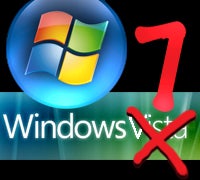 |
Microsoft has launched a blog
dedicated to its forthcoming operating system, called “Windows 7” at this
point, to be hosted by two senior vice presidents who are leading the
development effort.
For now, the site just contains an introductory statement from Jon DeVaan
and Steven Sinofsky, who will be heading up the development. They will reveal the first engineering details about Windows 7 on
Oct. 27 at the Professional Developers’ Conference in Los Angeles. Additional talks will take place at the Windows Hardware Engineering Conference
(WinHEC) scheduled for Nov. 5–7, also in Los Angeles.
“With this blog we’re opening up a two-way discussion about how we are
making Windows 7. … We strongly believe that success for Windows 7 includes
an open, honest and two-way, discussion about how we balance all of these
interests and deliver software on the scale of Windows. We promise and will
deliver such a dialogue with this blog,” the two wrote.
A Microsoft (NASDAQ: MSFT) spokesperson said the goal of the blog is to
foster two-way communication between the engineering team and
developers for Windows 7, as well as provide additional information on how the OS is being built.
“One of our chief goals with this release is to be deliberative,
thoughtful and considerate with what we disclose,” the spokesperson said. “When we disclose information, we want to make sure it is accurate and truthful. Steven and Jon would like to start the conversation about Windows 7, and they will
continue to provide information at various milestones in the development
process”
But don’t view this blog as Microsoft acknowledging the failure of Vista
and moving on. “This reflects the fact they are hoping to get Window
7 out by 2010, and there will be some things in it of interest to software
developers. To get those developers, they need to start corralling them now.
This is sort of a starting gun for that push,” said Rob Helm of analyst firm Directions on Microsoft.
“There were Vista blogs before Vista shipped, there’s an IE8 blog, and
blogs are a standard way of communicating with developers and others,” said
Michael Silver, an analyst with Gartner (NYSE: IT). “If Microsoft really wants to
open a dialogue in time to get any real feedback, they cannot wait much longer
in the dev cycle. Plus, they need to have enough information out so that
developers can support Windows 7 as soon as possible once it’s released.”
Sinofsky was brought over from the Office division in March
2006 to help get the Windows strategy on track. Thanks to a recent
reorganization, he now reports to CEO Steve Ballmer, not CTO Ray Ozzie.
DeVann has been involved in a number of projects at Microsoft, most notably
Internet Protocol television, or IPTV
Microsoft seems determined to get more feedback from the community this
time around than it did with Vista, one of the many knocks on the
beleaguered operating system. Sinofsky and DeVaan said their goal was to
make sure “not to set expectations around the release that end up
disappointing you–features that don’t make it, claims that don’t stick or
support we don’t provide.”
Windows 7 was first discussed at the beginning of this year, when
Microsoft executives promised a long gap between OS
releases like the one between Windows XP (2001) and Vista (2007), would not occur. Given the relative dissatisfaction with Vista, considerable talk abounds about how IT
shops are just holding on and waiting for the new OS rather than an upgrade to
Vista.
What is known so far about Windows 7 is that it will be based
on Windows Server 2008 kernel, which is an updated version of the Windows
Vista kernel. The current driver model will be retained. In short, the
internals won’t change much.
Helm is hoping Sinofsky repeats for Windows what he did with Office 2007,
which had a much more successful launch and has been well received. “It
would be a good thing for him to do for Windows 7 what he did with Office.
They will benefit from a fairly conservative release delivered on time.
Windows 7 could come out onto the market with less of the early pain Vista
had to face,” he said.
Microsoft is aiming Windows 7 for a late 2009 or early 2010 release.


